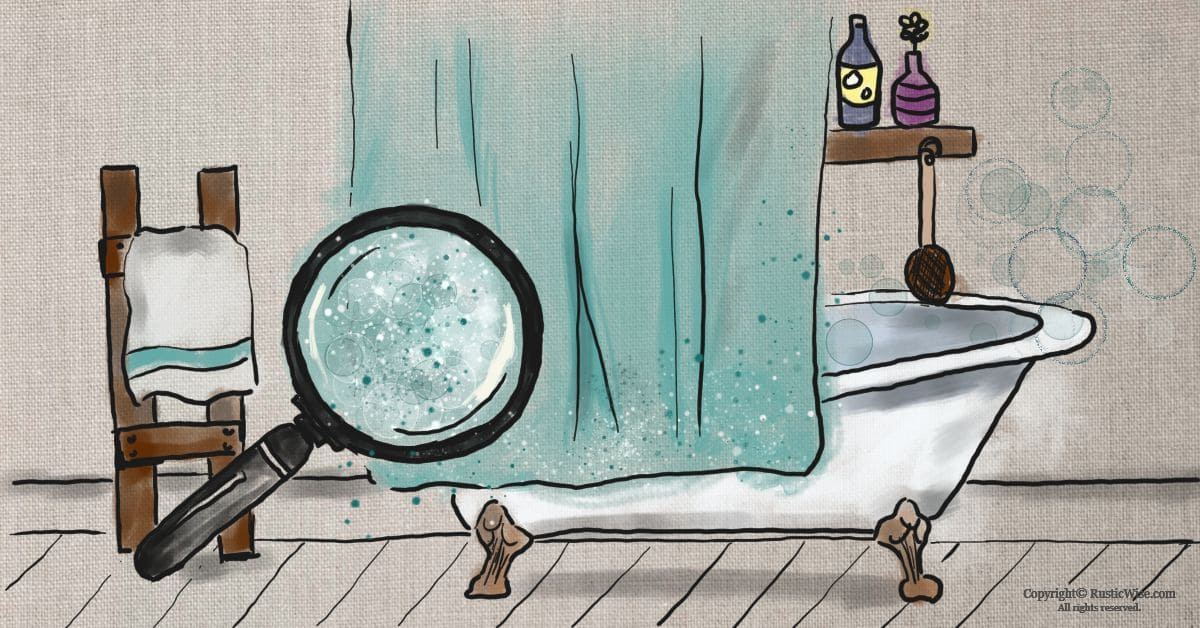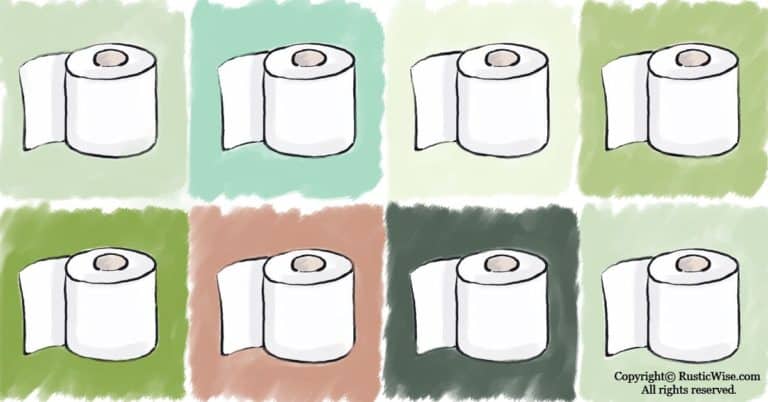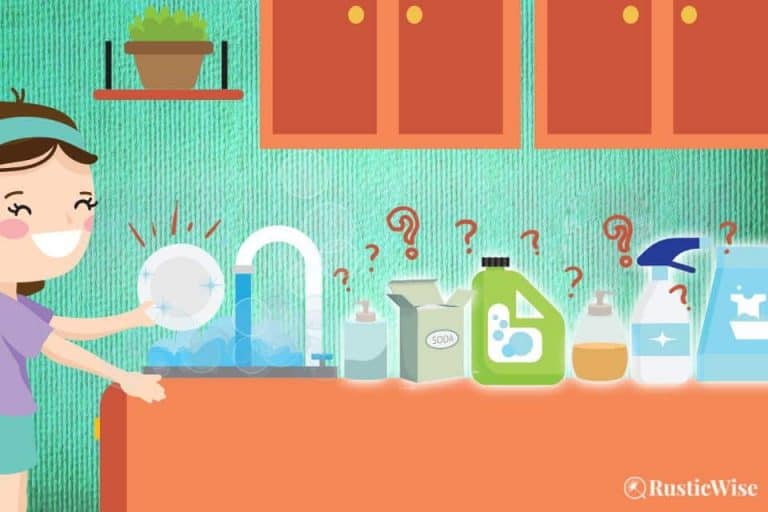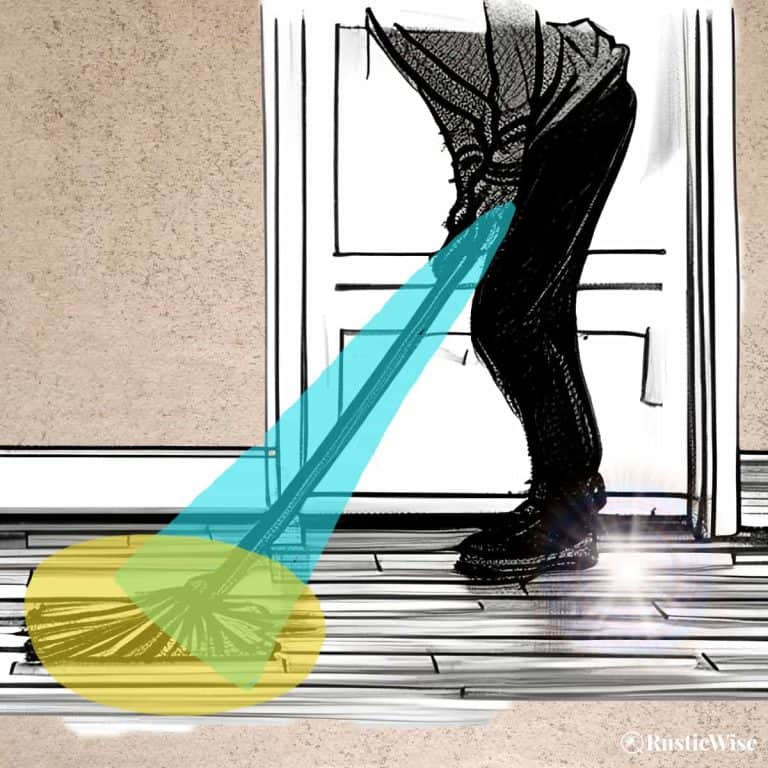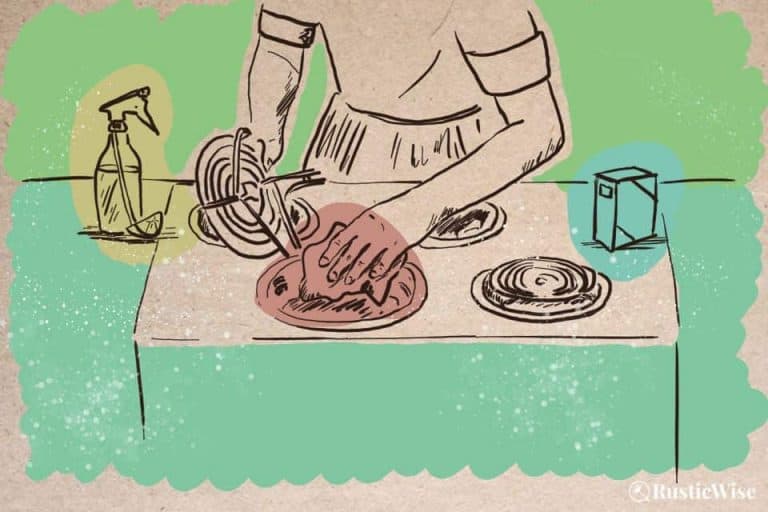3 Ways to Clean Mildew Off Shower Curtains and How to Keep it That Way
All those long, relaxing, hot showers come at a cost—the development of soap scum, mildew and possibly mold on shower curtains. While we all remember to scrub the toilet and clean the tub, shower curtains are rarely cleaned. We’ll go over three ways to clean mildew off shower curtains:
- How to machine-wash with baking soda and vinegar;
- How to handwash and spot-clean; and,
- How to wash heavily soiled curtains using bleach.
Luckily, with the following tips you can easily clean mildew off shower curtains. Let’s banish mildew and restore your shower curtains to their formerly pristine state!
Mildew vs. mold
So, what exactly is mildew? Britannica defines it as, “a conspicuous mass of white threadlike hyphae and fruiting structures produced by various fungi.” Your nose may have helped you detect mildew’s presence before your eyes—it gives off a funky smell!
While the terms mold and mildew are often used interchangeably, the presence of mold is more serious and causes more severe respiratory issues. Even mildew left for too long is poor for your health.
Ideal breeding grounds for mildew and mold are dark, damp places with poor ventilation—such as bathrooms. It’s no wonder a wet curtain is a magnet for mildew and mold!
How to clean mildew off shower curtains
Whether you have a plastic shower curtain or fabric curtain, we’ll go over a few different ways to clean mildew off them.
Method #1: Machine wash with baking soda and vinegar
Your job is easy-peasy if your shower curtain and/or shower curtain liner is machine-washable. Even some plastic shower curtains are machine-washable. Check the washing instructions first on your shower curtain and liner.
Tip: Use the warm cycle, not hot, to prevent plastic curtains from warping. Use equal parts baking soda and vinegar; if ½ cup is not enough, increase to 1 cup.
You’ll need:
- One or two clean, white towels
- ½ cup baking soda
- Laundry detergent
- ½ cup white vinegar
- Remove shower curtain and/or liner carefully from shower rings.
- Throw the shower curtain and liner into the washing machine along with one or two clean, white towels. The towels prevent the curtains from wrinkling and help to clean and distribute the weight more evenly.
- Run the wash cycle on normal with warm water. Add laundry detergent plus baking soda.
- During the rinse cycle, add vinegar.
- Remove the curtains before the spin cycle begins. This causes unnecessary wear-and-tear.
- Allow to air-dry preferably in the sun. If this is not possible, you can reattach the shower curtain and/or liner to the curtain rings and let it dry.
Tip: Don’t put your shower curtain in the dryer unless the care instructions say to do so.
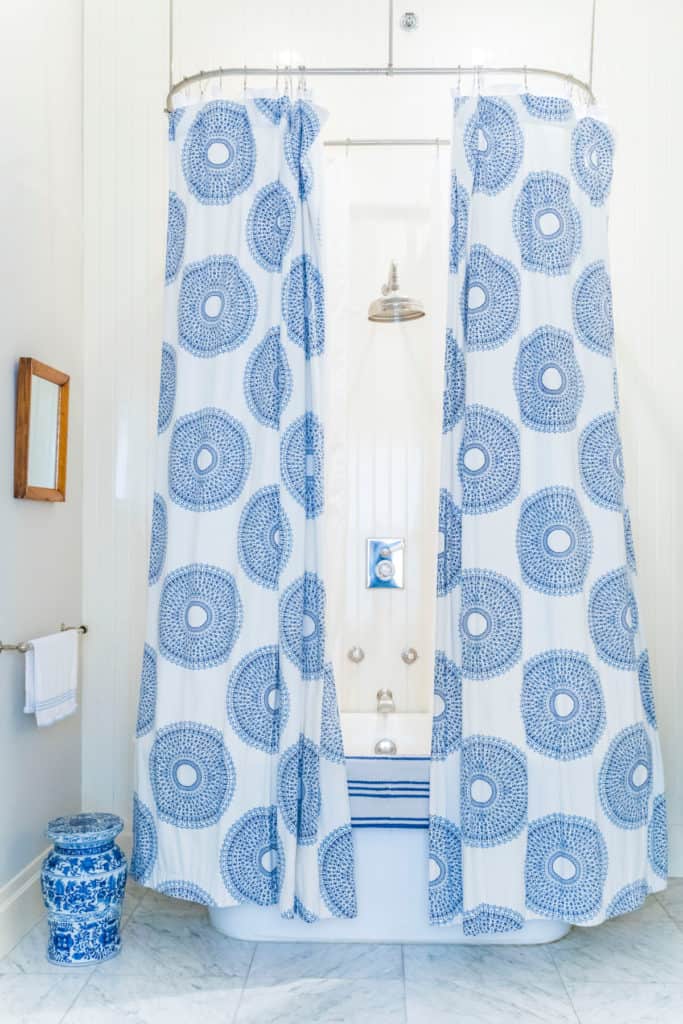
Method #2: Handwashing and removing stains
The washing machine may not be suitable for some delicate fabrics, and certain plastic or vinyl curtains. If you need to handwash your shower curtains, or if you need to do a bit of spot-cleaning to remove stains, here’s how to do it.
You’ll need:
- 1 cup of vinegar
- 2 tablespoons of laundry detergent
- Bathtub filled with warm water
- Baking soda (for spot-cleaning deep stains)
- Sponge or microfiber cloth to spot-clean as needed
To remove and spot-treat stains on fabric curtains, use baking soda and a damp microfiber cloth. Baking soda is a great natural abrasive that helps remove built-up shower gunk.
- Sprinkle some baking soda onto a damp cloth.
- Scrub until clean. Rinse well with water.
Continue on to handwash curtains:
- Remove shower curtain and/or liner carefully from shower rings. If the shower rings are grimy, remove them too.
- Fill the bathtub about half full of warm water. As the water is running, add the laundry detergent and vinegar to the water to allow it to thoroughly mix.
- Allow the shower curtain (and shower rings) to soak completely for 30 minutes.
- If stains are still visible, repeat spot-treatment with more baking soda and swirl to rinse.
- Now it’s time to rinse. Drain the tub of dirty water and refill with cold, clean water. Rinse well by swirling in cold water. Drain tub again.
- Gently squeeze out excess water from shower curtains. Remove and dry shower rings.
- Reattach shower rings. To allow shower curtains to air-dry, hang curtains back onto shower rings. It’s important to allow the curtains to completely dry to prevent further mildew growth. Ensure the bottom of the curtain is tucked into the bathtub (to prevent a water puddle!), and spread out the shower curtain to allow air to circulate.
Tip: Ensure your bathroom is well-ventilated when allowing your newly-cleaned shower curtain to air-dry. Turn on the fan, or open the window.
Method #3: Using bleach for heavily soiled shower curtains
Sometimes you need something stronger like bleach to cut through the built-up soap scum and mildew. Or, if you have mold, bleach is an effective agent in removing it. The problem with using bleach is it can damage certain fabrics or colors if used incorrectly.
If your shower curtains are white, you don’t need to worry about bleach discoloration. If, however, you have colored curtains or liners, try using bleach alternatives like Clorox 2 or OxiClean instead.
You’ll need:
- One or two clean, white towels
- ½ cup bleach
- ¼ cup laundry detergent
- Remove shower curtain and/or liner carefully from shower rings.
- Throw the shower curtain and liner into the washing machine along with one or two clean, white towels. The towels prevent the curtains from wrinkling and help to clean and distribute the weight more evenly.
- Start the wash cycle on warm and let the water run for a few minutes before adding laundry detergent followed by bleach.
- Once the wash cycle starts, load the shower curtains into the washing machine.
- Remove the curtains before the spin cycle begins. This causes unnecessary wear-and-tear.
- Allow to air-dry, preferably in the sun. If this is not possible, you can reattach the shower curtain and/or liner to the curtain rings and let it dry.
Tip: When using bleach in the washing machine, always add it to the water before adding soiled items to avoid fabric discoloration. Only add items to during the wash cycle.
How to prevent mildew from coming back
So now that you have clean shower curtains, how do you keep them that way? There are a few things you can do to keep mildew at bay:
- Ensure your bathroom is well-ventilated. This could mean opening a window or turning on the fan during showers. Check to see if your exhaust fan needs cleaning by removing the fan cover; a dusty or clogged fan is not efficient.
- Wipe down shower curtain after each use with a clean microfiber cloth.
- Speed up drying time by spreading your shower curtain out after using. If your curtain is always sitting scrunched up and wet, it’s more prone to growing mildew or mold.
- Make your own mildew-prevention spray by combining a solution of equal parts water and white vinegar in a spray bottle. Spray the shower curtain after each use.
If you’ve tried all the tips above, and you still can’t remove stubborn stains or your curtains are torn, it’s time to say adios and replace them. When shopping for a new shower curtain look for one that’s machine washable and one with a smooth backing to make it easier to clean.

Author: Theresa Tesolin
Theresa is co-founder of RusticWise. She helps people unleash their inner DIY spirit by encouraging them to get dirty and make or grow something from scratch.

